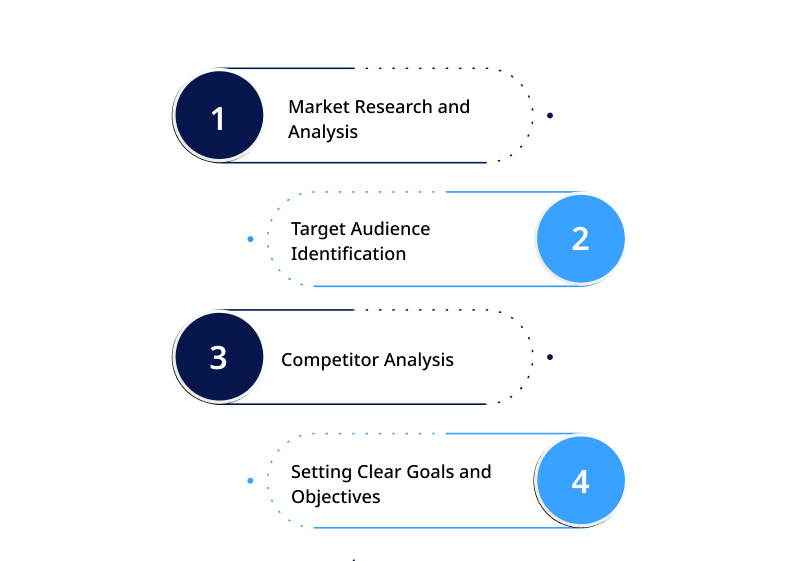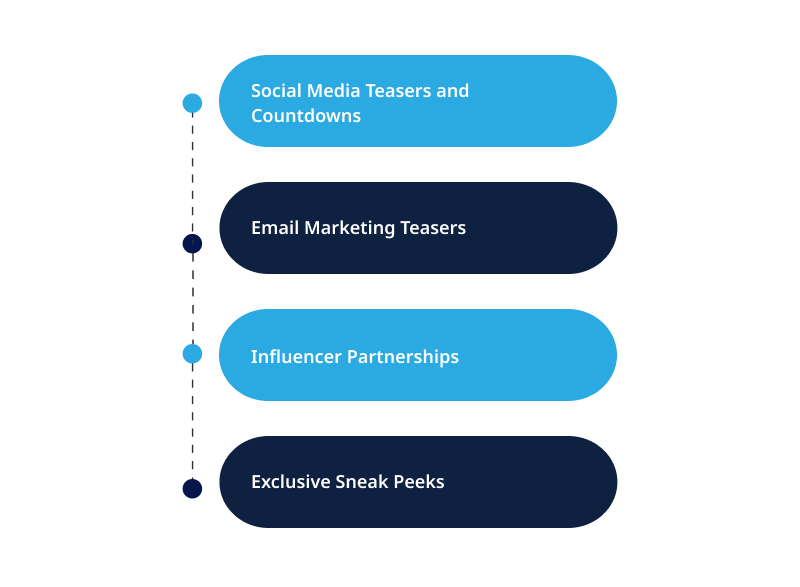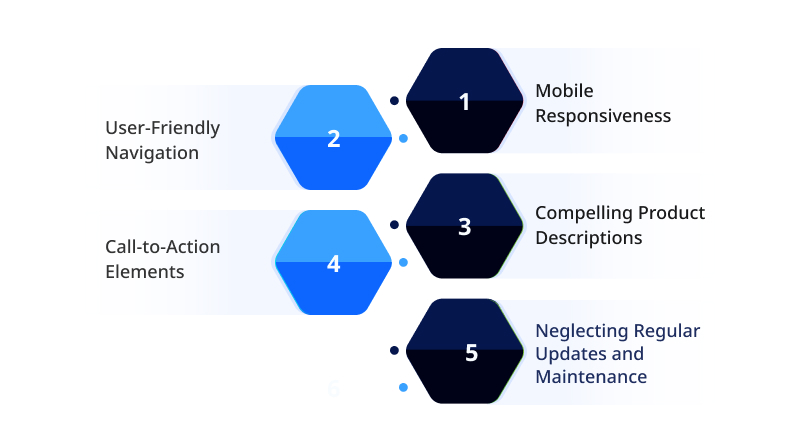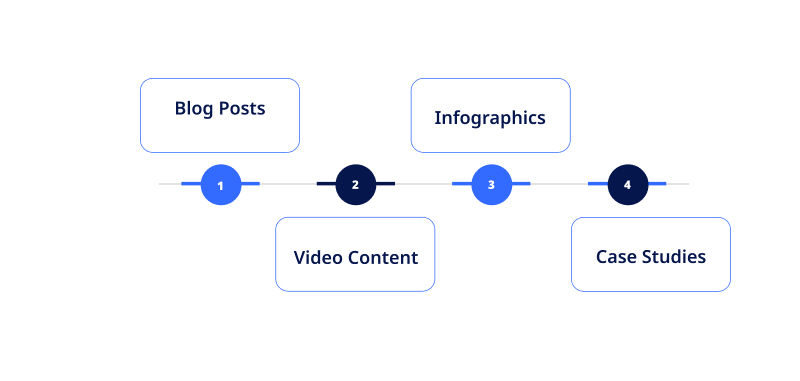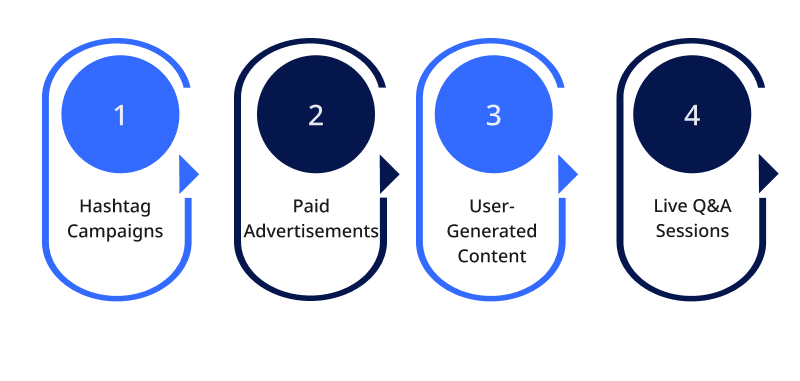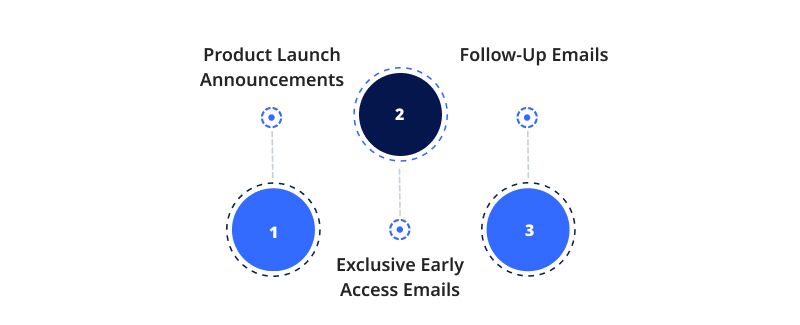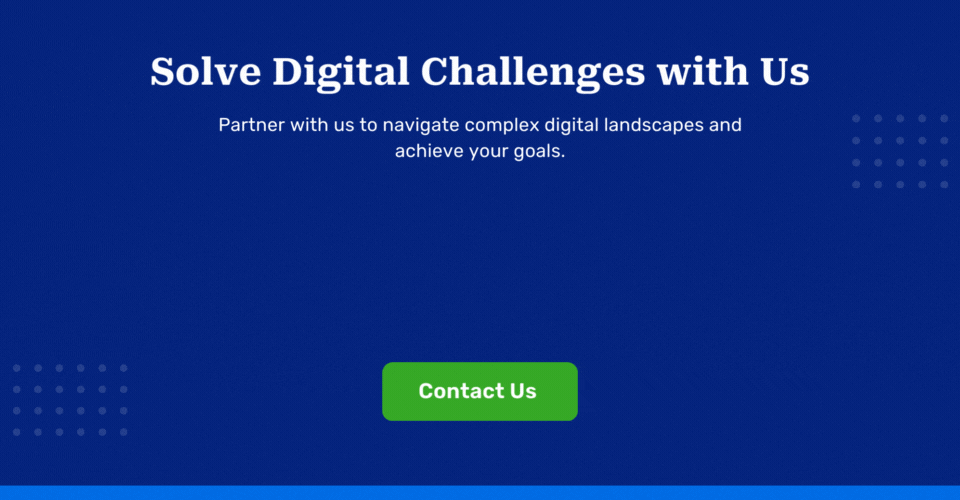As odd as it may seem, the first item on a product launch checklist doesn’t always have a strong product. You can have the best product possible, with features and benefits that are superior to your rivals.
However, the brand might not receive the market reaction and uptake it merits if it disregards the qualitative procedures listed in the product launch checklist below.
In this post, we explore effective strategies for product launch marketing, including important pre-launch actions that can boost the likelihood of success.
Let’s get started.
Table of Contents
Pre-Launch Preparation
To guarantee a seamless and memorable debut, thorough pre-launch planning is necessary before revealing your product to the public. Let’s delve into key aspects that form the bedrock of a successful launch.
Market Research and Analysis
It is important to conduct in-depth market research and analysis before product launch. It involves researching the characteristics of your market, comprehending your rivals’ strategies, and spotting trends that can affect the marketability of your offering.
- Examine your customers’ wants, needs, and pain points to ensure your product fills a real need in the market.
- Gaining insights from market data analysis, such as pricing schemes and consumer behavior, can enable you to optimize your product strategy.
The objective is to thoroughly grasp the market environment to strategically position your product and make decisions at every stage of its lifespan.
Target Audience Identification
One of the most important pre-launch preparation steps is determining your target audience. To do this, you must create thorough buyer personas that accurately reflect your prospective clients. Here’s how:
- Consider factors like preferences, behaviors, demographics, and pain points to create a complete picture of the target market for your product.
- You may effectively adjust your marketing messaging, features, and user experience to resonate with your target demographic by understanding them.
- Your marketing initiatives are also guided by this clarity, which ensures that the people most likely to use and profit from your product are the ones you reach out to.
Accurately defining your target market improves your capacity to establish trust and cultivate a user base that complements the benefits of your product.
Competitor Analysis
Conducting a thorough competitor analysis before product launches is crucial for comprehending the market environment. Analyze the advantages and disadvantages of rivals in your market by looking at:
- Features
- Approaches to pricing
- General positioning
Its analysis offers insightful information on consumer preferences, market trends, and any gaps in your competitors’ products. You can strategically position your product to better fulfill the demands of your target audience by figuring out where your competitors succeed and where they fail.
Also Read: Mastering Marketing in 2024: 8 Steps to a Fool-Proof Strategy
Setting Clear Goals and Objectives
Prioritizing and establishing quantifiable goals and objectives is critical to pre-launch planning. Follow the below steps:
- Decide what you want to accomplish when you launch your product, be it reaching a certain number of users, making a certain amount of money, or breaking into a new market.
- Ensure your objectives are reasonable, time-bound, and consistent with your business plan.
Having well-defined goals gives your team direction and keeps them engaged during the pre-launch stage. These objectives also act as benchmarks for assessing the success of your product launch marketing, allowing you to track results and make wise improvements afterward.
Building Anticipation in Product Launch
Building excitement is essential to successful product launch content marketing services in the digital era. Follow these calculated moves to spark curiosity and prepare the audience for an eagerly anticipated reveal.
Social Media Teasers and Countdowns
Using social media for your benefit is a smart way to create excitement for a product launch. Social media teasers generate hype among your audience by offering tantalizing peeks at the future product.
These are intentionally created to arouse curiosity, teasers might be in the shape of captivating images, brief video clips, or mysterious text.
Moreover, countdowns provide a sense of urgency and excitement that makes your followers want to see what comes next.
Users are enticed to remain tuned and participate in the revealing when the countdown hits zero when you deliberately reveal small portions of your product and count down to its introduction.
Email Marketing Teasers
Email advertising teasers preview the characteristics, advantages, or special qualities of your next offering. Email subscribers are encouraged to anticipate the full product reveal when intriguing subject lines and special content previews are created.
Consider sending well-timed emails leading up to the launch day to divulge more details and create anticipation gradually.
Teasers for email marketing offer a direct, personalized approach to interacting with your audience, ensuring that your subscribers anticipate the formal product launch with bated breath.
Influencer Partnerships
Leveraging influencer partnerships is another powerful way to generate buzz and enthusiasm about your product in developing anticipation.
You can use their already-established reach and credibility by partnering with influencers who share your vision and connect with your target market. Here’s how:
- Influencers can genuinely pique followers’ excitement and curiosity by sharing glimpses, analysis, or even firsthand accounts of using your impending product.
- Influencers who genuinely support a product create a lot of hype since their followers look forward to it when a reliable source releases a new product.
Exclusive Sneak Peeks
Create an atmosphere of exclusivity and mystery by giving them a tantalizing peak at what your product is all about. You can instill a sense of privilege and importance in people by giving particular people or groups early access to particular features, functionalities, or parts of your product.
This strategy makes people feel like they’re in an exclusive club and invites them to talk about their experiences, naturally sparking conversations and building anticipation among your target audience.
Special previews serve as an exciting lead-in, creating a sense of anticipation by providing an intimate look at the value and innovation your audience will experience when the product is officially released.
Navigate the challenges of digital marketing with our ultimate services for a product launch. Connect with us to maximize your product’s market potential!
Website and Landing Page Optimization
Update your website and landing pages to attract visitors and convert them into purchases. Here’s a closer look at some of the essential components that lead to better user experiences and higher conversion rates:
Mobile Responsiveness
One essential component of efficient website and landing page optimization is ensuring the site is mobile-responsive. A website that adjusts to several screen sizes is necessary for both user experience and search engine results, given the sharp increase in the use of mobile devices.
It must be mobile responsive to create a website that is as good to browse on smartphones, tablets, and other mobile devices. This increases user interaction and complies with search engine algorithms prioritizing mobile-friendly websites.
User-Friendly Navigation
An essential component of keeping and converting website visitors is user-friendly navigation. It includes how menus, links, and material are arranged intuitively to make it easy to navigate the website.
With a well-designed navigation system, longer sessions and fewer bounce rates result in users easily getting the information they need. It involves establishing a distinct hierarchy, using illustrative labels, and adding simple navigation menus.
In addition to improving user experience overall, intuitive navigation helps search engine optimization by making it simpler for crawlers to index the website. Websites may create a good first impression and entice users to explore deeper by emphasizing accessibility and usability, leading to increased conversion rates.
Compelling Product Descriptions
Strong product descriptions are essential to a website’s or landing page’s efficacy. These summaries function as a virtual sales pitch, giving customers a comprehensive grasp of the product’s features, advantages, and value proposition.
A well-written product description engages, informs, and persuades prospective buyers. It should be brief but detailed, emphasizing the main benefits and addressing any potential problems the target market may be experiencing.
The description is more convincing by using captivating language and narrative devices and highlighting the product’s special qualities. It will ultimately encourage visitors to perform the desired action, increasing conversion.
Call-to-Action Elements
Call-to-action (CTA) elements are the guiding force that directs visitors on a website or landing page toward the desired actions, such as making a purchase, filling out a form, or subscribing to a newsletter.
These components must be thoughtfully positioned and created to draw attention and elicit a quick response. Effective CTAs use clear and action-oriented language, conveying a sense of urgency or value.
CTAs, shown as buttons, banners, or well-placed text, should support the page’s main goals and smoothly direct visitors through the conversion funnel. Optimizing the performance of CTA variations through A/B testing can ensure that they resonate with the audience and generate the required level of interaction.
Discover the essentials for your product's successful digital marketing launch. Book an appointment with us to boost your product’s visibility and profitability.
Content Marketing Strategy
Content marketing includes utilizing a variety of content formats to captivate and engage a wide range of audiences. Here’s a breakdown of key content elements to consider:
Blog Posts
Use written material to your advantage by creating informative, educational, and entertaining blog entries. A core component is that blogs enable in-depth discussion of important subjects to your audience.
When they are updated frequently, they improve the SEO of your website, bringing in organic traffic and establishing your company as a leader in your sector.
Video Content
Adopt the visual format and create engaging video content. Videos captivate viewers and effectively communicate ideas through storytelling, product demos, and lessons.
Since social media networks and platforms like YouTube have a broad audience, video is crucial for building intimate connections with viewers.
Infographics
Use data-driven and design-infused infographics to visualize difficult information. Infographics effectively break difficult ideas into digestible chunks and boost information sharing.
This style works especially well on social networking sites because attention-grabbing images can swiftly communicate important concepts.
Case Studies
Use eye-catching case studies to illustrate how your goods or services are used in the actual world. You may establish trust and give prospective clients insightful information by presenting success stories and outlining the favorable results your solutions have produced.
Case studies are excellent instruments for decision-making since they provide evidence of the success of your recommendations.
Grow your business with our product launch services in digital marketing. Connect with us to empower your business now!
Social Media Campaigns
Successful social media marketing strategies are essential for raising brand awareness and engagement. Utilizing a variety of tactics guarantees a multidimensional approach to audience engagement.
Here’s a breakdown of key components of social media campaigns:
Hashtag Campaigns
Launch hashtag campaigns to capitalize on user participation. Urge your audience to participate in the discussion, contribute their stories, and spread the word about your company.
Creating a distinctive and memorable hashtag can convert followers into brand ambassadors and build a community around your goods or services.
Paid Advertisements
Use sponsored ads specifically targeted to increase your organic reach. Social media sites like FB, Twitter, and Instagram offer sophisticated options for ad targeting.
You can target particular demographics, retarget website visitors, and increase conversions by spending money on paid advertisements.
Whether your campaign’s objective is direct sales, lead generation, or brand awareness, make sure the content of your ads reflects those objectives.
User-Generated Content
Encourage user-generated content (UGC) to transform your audience into content providers. Encourage customers to write about their interactions with your goods or services.
User-generated content (UGC) acts as real testimonials and expands your brand’s reach via social networks. Acknowledge and highlight user efforts to improve the relationship between your brand and its community.
Live Q&A Sessions
Hold live Q&A sessions to interact with your audience in real-time. This interactive strategy helps fans relate to the faces behind your products or services, humanizing your brand.
During live sessions, answering questions directly and offering insightful commentary promotes openness and increases trust. Use the advantages of social media sites like Facebook, Instagram, and LinkedIn to hold lively and interactive Q&A sessions.
Email Marketing Campaigns
Within the digital marketing strategy for new product launches, email campaigns are a powerful tool for connecting with your target audience and achieving important results.
Here, we explore particular email marketing formats to engage and connect with your readers.
Product Launch Announcements
Create enticing emails to highlight and publicize the release of a new product. Here’s how:
- Give the audience interesting information about the product’s attributes and benefits.
- Use visuals like pictures or movies to build suspense and excitement.
- Clearly marked calls-to-action (CTAs) encouraging recipients to learn more or buy should be included.
- Consider providing special offers or early access to encourage instant involvement.
Exclusive Early Access Emails
Give a limited number of subscribers or devoted clients early access to emails to create an air of exclusivity. Emphasize the advantages of belonging to this select club, such as early access to new features, unique discounts, or time-limited offers.
Write a compelling story highlighting the honor of being the first to experience something new. To create a sense of urgency and value, include a clear call to action encouraging recipients to claim their exclusive access.
Follow-Up Emails
Follow-up emails are essential for lead nurturing and engagement maintenance in email marketing efforts. Senders who have already engaged with your original correspondence—by opening earlier emails or clicking on links—will get these emails sequentially.
Follow-ups offer a chance to move prospects through the sales funnel, resolve concerns, and reiterate important points. These emails seek to maintain attention and encourage desired behaviors, whether by reminding recipients of time-sensitive offers or offering extra insightful material.
Top Launch Day Strategies
Product launch digital marketing services require a well-thought-out plan to optimize impact. The below-explained smart launch day strategies can help you build anticipation, keep your audience interested, and make a great first impression on the market.
Social Media Blitz
- Execute a focused and well-coordinated effort across social media channels to maximize visibility and interaction on launch day.
- Use hashtags wisely, captivating images, and teaser content to generate conversation and entice viewers to engage.
Email Blast
- Start a successful email marketing focused on reaching various people, such as stakeholders, current subscribers, and prospective clients.
- Create individualized and captivating email content that entices recipients to act immediately by highlighting salient features, advantages, and any launch day deals.
Live Product Demos
- Use in-person product demos to draw viewers and highlight salient characteristics and advantages.
- Allow for real-time communication so prospective consumers can ask inquiries and get answers immediately.
- Use various venues like live streaming or webinars to reach the audience and create buzz about your product.
Customer Support Readiness
- Make sure your customer service team members are ready and available on launch day.
- Provide a variety of support avenues, such as live chat, email, and phone help, to quickly resolve any problems or questions.
- To help people navigate your product, include FAQs, tutorials, and clear and accessible documentation.
- Keep a careful eye on queries and feedback, and modify your support tactics in response to user interactions and requirements.
Post-Launch Analysis and Optimization
Launching your product is just the beginning. A thorough post-launch analysis and optimization strategy are crucial to ensure sustained success and user satisfaction.
Here’s how to navigate this critical phase:
- Analyze user comments to find improvement areas.
- Analyze key performance indicators (KPIs) to assess the product’s success.
- Examine user engagement and behavior to understand feature usage patterns.
- Monitor system performance and address any technical issues or glitches promptly.
- Assess the effectiveness of marketing strategies and identify successful channels.
- Collect and analyze user data to refine and personalize user experiences.
- Collaborate with customer support to address common user concerns or inquiries.
- Conduct A/B testing to optimize various elements of the product.
- Prioritize feature enhancements based on user demand and market trends.
- Iterate on the product roadmap, incorporating lessons learned for future updates.
How can PixelCrayons Help in a Successful Product Launch?
PixelCrayons ensures a successful product launch through its comprehensive and client-centric approach.
Our proficiency in UI/UX design ensures an engaging and user-friendly interface, while our commitment to selecting the right technology stack ensures a robust foundation for scalability.
Through meticulous development, rigorous testing, and a focus on security, we ensure the creation of a high-quality product.
We also provide support in product launch marketing strategies, user onboarding, and training, contributing to a seamless and successful product launch that meets both client expectations and end-user needs. Connect with us for more!
Final Call
The digital age calls for a new strategy for product launches. It demands an efficient blend of data analysis, well-thought-out planning, purposeful creativity, and a strategic use of digital platforms.
Remember that consistency, communication, and close tracking of your tactics are essential for a successful digital product launch.
It may seem like an overwhelming journey, but it will guide you through this intricate process, enhancing the chances of your product making an impressive splash in the market.

